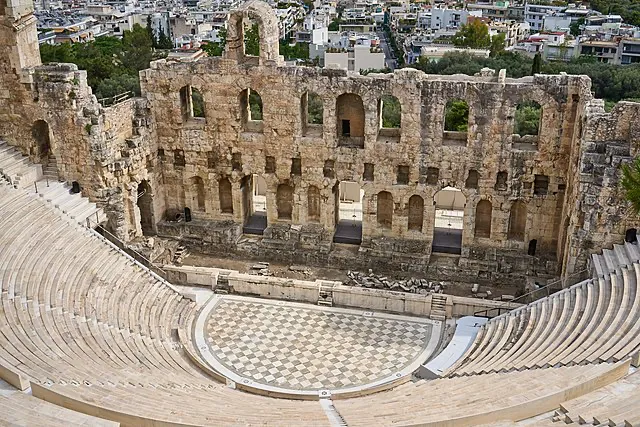The Odeon of Herodes Atticus, also known as the Herodeon, is a stone theatre structure located on the southwest slope of the Acropolis of Athens, Greece. Built in 161 AD by the Athenian magnate Herodes Atticus in memory of his wife, Aspasia Annia Regilla, it was originally a steep-sloped amphitheater with a three-story stone front wall and a wooden roof, and was used as a venue for music concerts with a capacity of 5,000. Despite its destruction by the Heruli in 267 AD, the Odeon was restored in the 1950s and today, it is a major venue for the Athens Festival, which runs from May to October each year, and hosts musical and theatrical performances.
Get your dose of History via Email
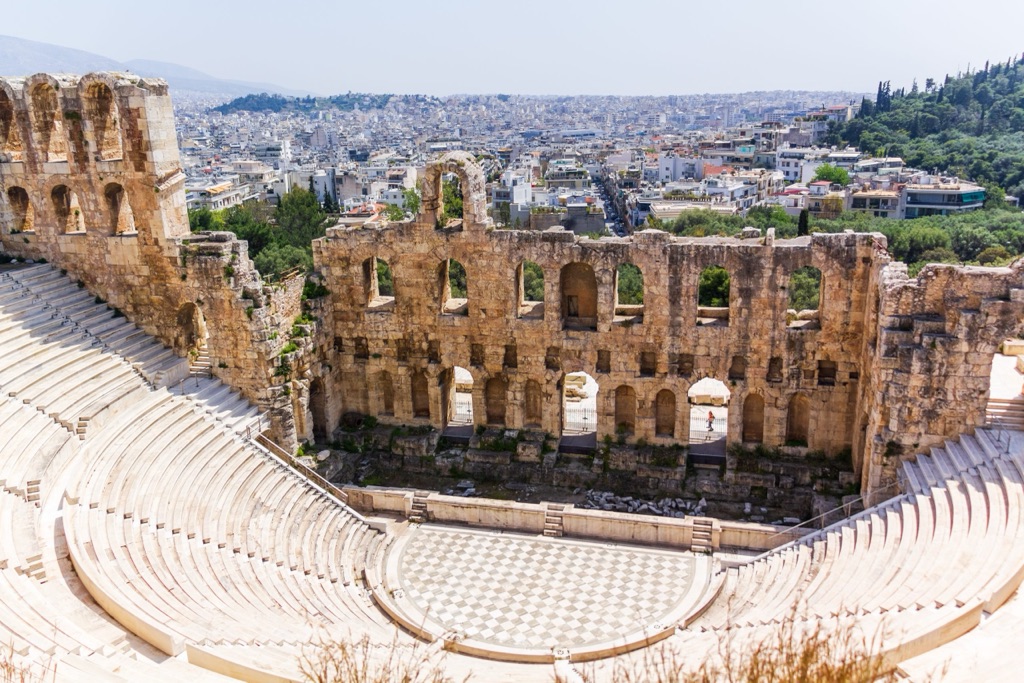
What is the historical significance of the Odeon of Herodes Atticus and what role did it play in ancient Greek culture and society?
The Odeon of Herodes Atticus holds a significant place in ancient Greek history as it represents the cultural richness and architectural prowess of the era. Herodes Atticus, a prominent Athenian, built the Odeon as a tribute to his wife, showcasing the deep personal and societal values attached to the monument. It was a symbol of the flourishing cultural scene in Athens, a city renowned as the birthplace of democracy and philosophy.
In ancient Greek society, the Odeon was a hub for musical concerts and poetic competitions, reflecting the Greeks’ deep appreciation for the arts. It served as a communal space where citizens gathered to enjoy performances, fostering social interaction and community bonding. Moreover, the Odeon was a testament to the Greeks’ advanced understanding of acoustics, as the design of the theatre allowed for excellent sound quality.
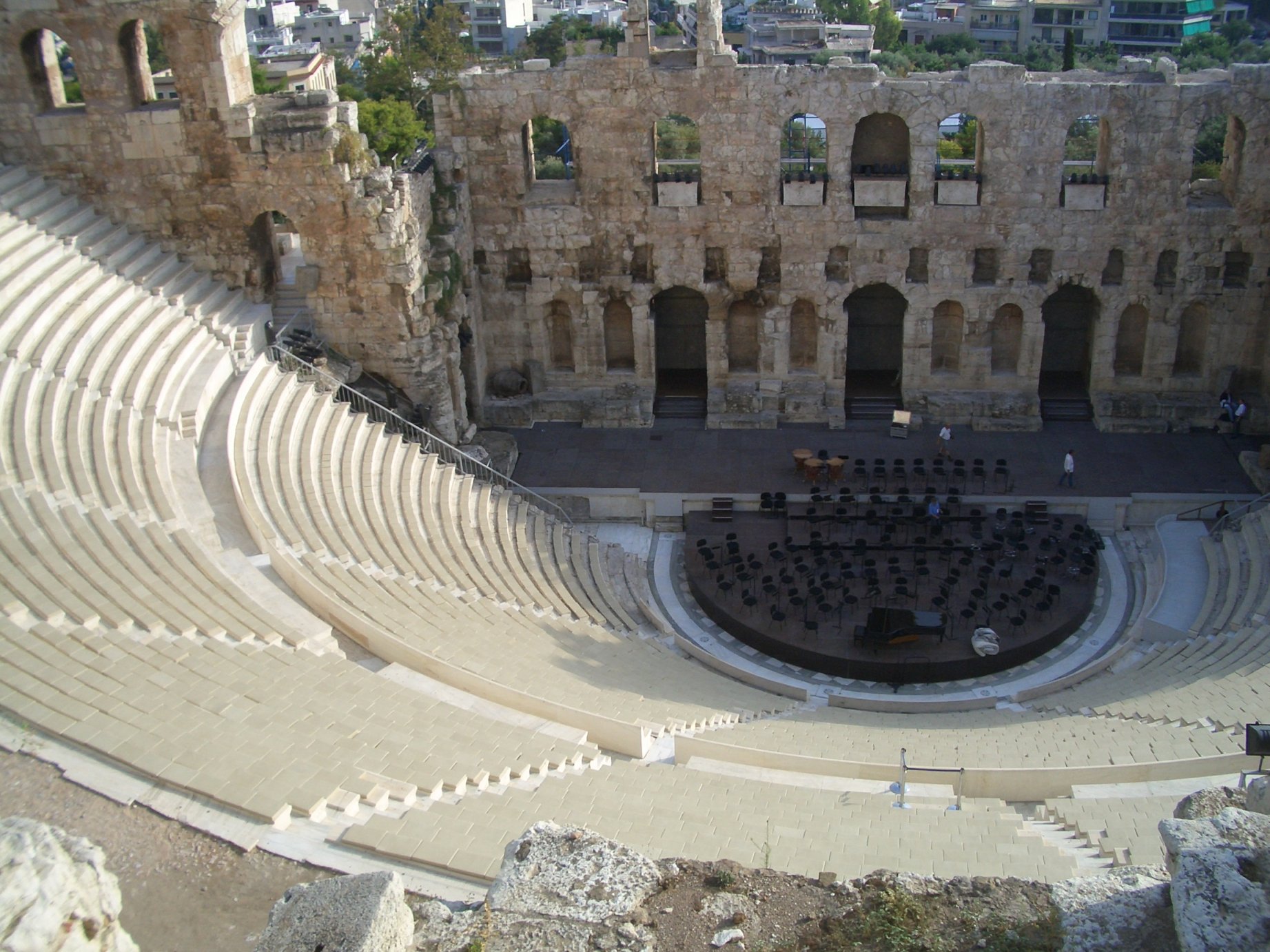
What types of performances were held at the Odeon of Herodes Atticus in ancient Greece and how has its use evolved over time?
In ancient Greece, the Odeon of Herodes Atticus was primarily used for music concerts. The acoustics of the amphitheater were designed to amplify the sound of the instruments and voices, providing an unparalleled musical experience for the audience. Poetic competitions were also held at the Odeon, further highlighting the Greeks’ love for the arts.
Over time, the use of the Odeon has evolved to accommodate different types of performances. After its restoration in the 1950s, the Odeon became a venue for the Athens Festival, hosting a variety of musical and theatrical performances. Today, it is a popular tourist attraction and continues to serve as a venue for concerts and performances, keeping the ancient Greek tradition of celebrating the arts alive.
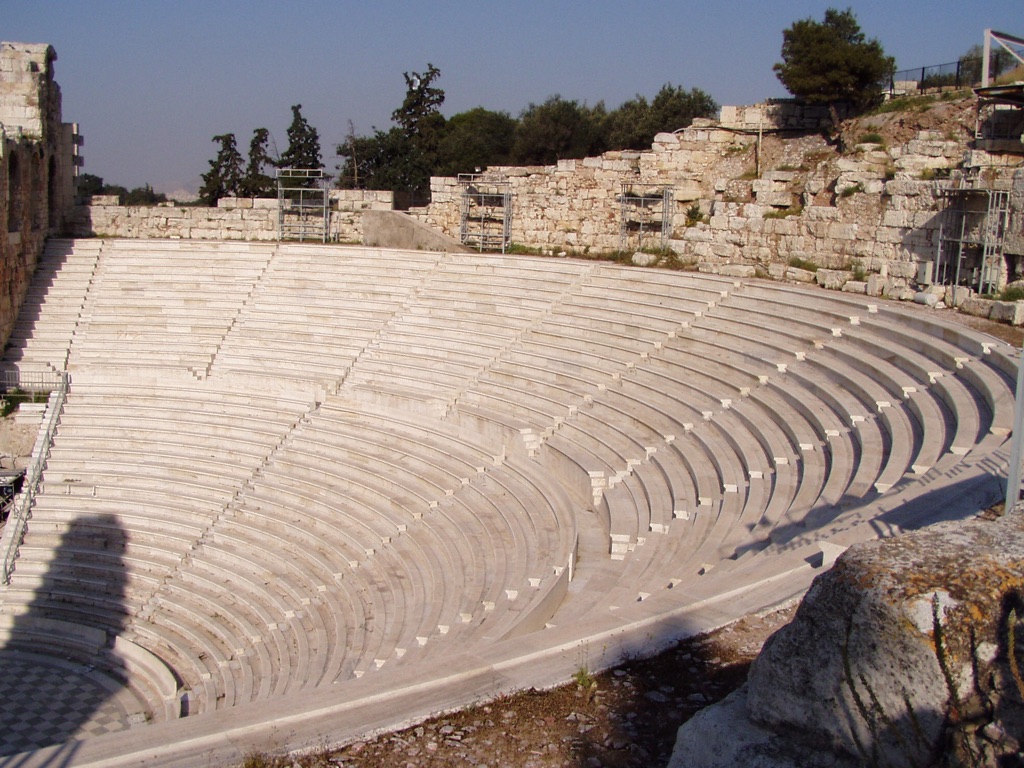
What are some of the key architectural features and techniques used in the construction of the Odeon of Herodes Atticus?
The Odeon of Herodes Atticus is a marvel of ancient Greek architecture. It was built using a combination of stone, tiles, and mortar, showcasing the Greeks’ advanced construction techniques. The amphitheater is semi-circular in shape, with a large orchestra area in the center. The steeply raked seating area, known as the cavea, was designed to provide an unobstructed view of the stage from every seat.
One of the most distinctive features of the Odeon is its exceptional acoustics. The design of the theatre, particularly the shape and arrangement of the seats, allows sound to be amplified and evenly distributed throughout the venue. This was achieved through careful planning and precision in construction, demonstrating the Greeks’ deep understanding of acoustics.
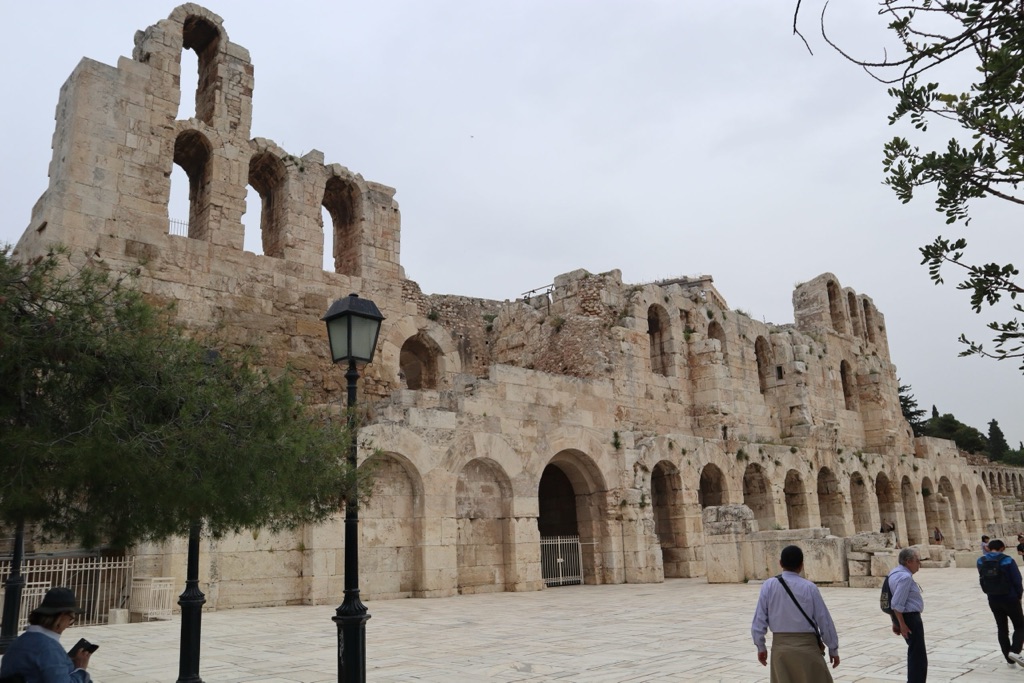
Conclusion and Sources
In conclusion, the Odeon of Herodes Atticus is a significant historical and cultural landmark that embodies the rich heritage of ancient Greece. Its role as a hub for musical and poetic performances highlights the importance of the arts in Greek society, while its architectural features showcase the Greeks’ advanced construction techniques and understanding of acoustics. Today, the Odeon continues to serve as a venue for performances, keeping the ancient Greek tradition of celebrating the arts alive.
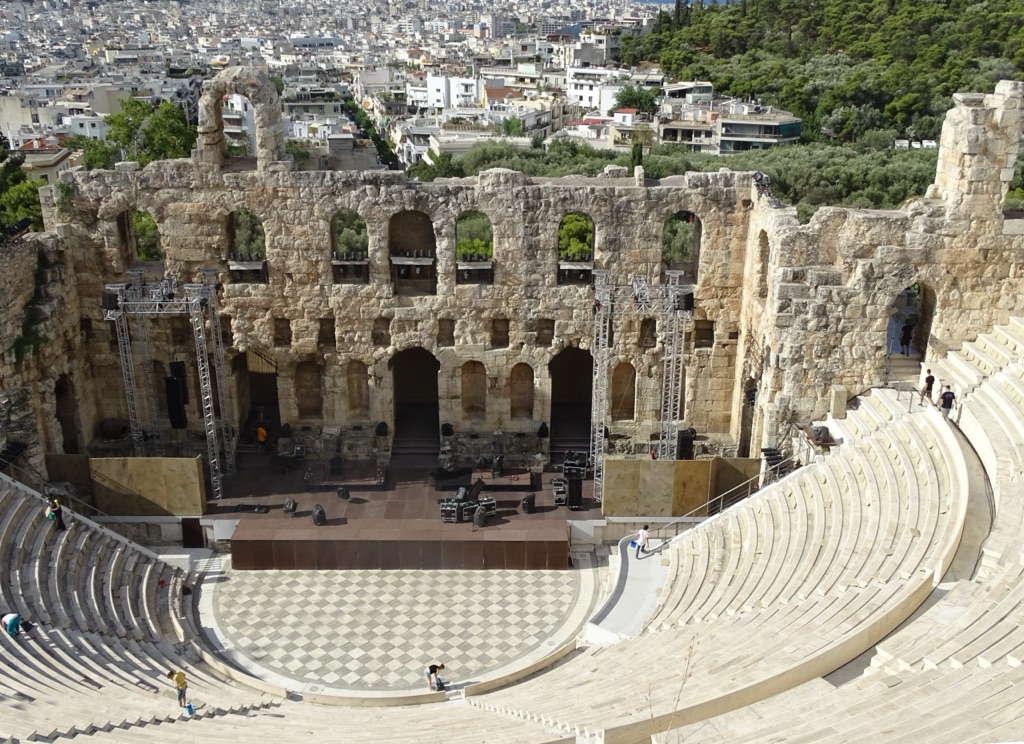
For further reading and to verify the information provided, the following sources are recommended:

